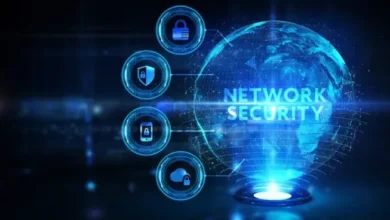Employee Monitoring Software: Enhancing Productivity and Compliance in Modern Workplaces

In today’s rapid-paced and competitive enterprise landscape, corporations are increasingly turning to software to monitor employees, specifically Employee Monitoring Software, to streamline operations, increase productivity, and ensure regulatory compliance. This generation provides treasured insights into how personnel work, presenting information-driven answers for effective management and selection-making.
Contents
- 1 Employee Monitoring Software Overview
- 2 Key Features of Employee Monitoring Software
- 3 Benefits of Employee Monitoring Software
- 4 Compliance and Privacy Considerations
- 5 Use Cases of Employee Monitoring Software
- 6 Choosing the Right Software
- 7 Implementing Employee Monitoring Software
- 8 Trends and Future Outlook
- 9 Conclusion
Employee Monitoring Software Overview
Employee Monitoring Software encompasses many tools designed to monitor and examine numerous factors of employee sports within the workplace. From tracking PC utilization and net surfing habits to tracking time spent on specific duties, these answers provide a complete view of employee productivity and behavior.
Employee Monitoring tool is a critical aid for modern businesses looking to optimize workforce performance, enhance safety features, and comply with industry policies.
Key Features of Employee Monitoring Software
Effective Employee Monitoring Software generally consists of a robust set of capabilities tailor-made to fulfill organizational needs:
- Time Tracking: Monitor and report the time employees spend on specific tasks. This characteristic aids in resource allocation, assignment management, and identifying time-wasting activities.
- Screen Monitoring: Capture screenshots or video recordings of employee desktops to monitor their work activities in real-time. This enables monitoring to ensure that personnel continue to be focused on task-related duties and adhere to corporation regulations.
- Activity Logging: Log and analyze employee movements, including website visits, software usage, record access, and emails dispatched. Detailed activity logs offer insights into productiveness styles and potential protection risks.
- Productivity Analysis: Generate complete reports and analytics based on gathered records to assess worker overall performance, identify key metrics, and identify development opportunities.
- Compliance Monitoring: Monitor worker sports associated with information security, confidentiality, and ethical requirements to ensure adherence to agency guidelines, industry regulations, and felony requirements.
Benefits of Employee Monitoring Software
The adoption of Employee Monitoring Software offers numerous blessings to both employers and employees:
- Increased Productivity: Businesses can enhance average productiveness and achieve higher output degrees by identifying inefficiencies and optimizing workflows.
- Cost Efficiency: Streamlined operations and progressed functional resource allocation led to decreased operational prices and superior profitability.
- Remote Work Management: Facilitate effective control of remote teams by tracking overall performance, maintaining verbal exchange, and fostering collaboration.
- Performance Accountability: Encourage responsibility amongst personnel by providing obvious overall performance metrics and comments, which may increase motivation and job delight.
Compliance and Privacy Considerations
While Employee Monitoring Tool offers considerable blessings, companies must navigate privateness concerns and criminal issues:
- Data Protection: Implement stringent records security measures to safeguard sensitive employee information and ensure compliance with statistics protection laws, such as GDPR or CCPA.
- Transparency and Consent: It is important to communicate transparently with personnel regarding the usage of tracking software. Obtain informed consent and clearly outline the purposes, scope, and implications of monitoring activities.
Use Cases of Employee Monitoring Software
Employee Monitoring Software unearths applications across numerous industries and operational eventualities:
- Remote Work Optimization: Manage and reveal remote employees to preserve degrees of productivity and collaboration across allotted groups.
- Project Management: Track task timelines, allocate aid, and challenge progress to ensure projects stay on schedule and within budget.
- Performance Evaluation: Evaluate employee performance based on goal records and metrics, facilitating truthful and correct overall performance evaluations and incentives.
- Compliance Audits: Conduct internal audits and checks to ensure adherence to regulatory necessities and industry requirements.
Choosing the Right Software
Selecting appropriate Employee Monitoring Software includes cautious attention to several factors:
- Scalability: Ensure the software can accommodate future increases and evolving organizational wishes.
- Integration Capabilities: Compatibility with current systems and software program packages to facilitate seamless information exchange and operational continuity.
- User-Friendliness: Ease of implementation, adoption, and use with each administrator’s and quit users aid to maximize effectiveness and decrease disruptions.
Implementing Employee Monitoring Software
Successful implementation and deployment require a strategic technique:
- Stakeholder Buy-In: Gain aid from key stakeholders and decision-makers to demonstrate the software program’s ability, blessings, and ROI.
- Employee Training: Provide comprehensive training and onboarding applications to educate employees about the software program’s motive, functionalities, and advantages.
- Policy Development: Develop clear and concise guidelines and recommendations for using monitoring software programs, emphasizing ethical and responsible use practices.
Trends and Future Outlook
The evolution of Employee Monitoring Software is fashioned with the aid of rising trends and technological advancements:
- Advanced Analytics: Integrating synthetic intelligence (AI) and machine studying (ML) skills to offer predictive insights and actionable hints.
- Employee Well-being Focus: Incorporation of functions that prioritize worker well-being, along with workload management tools and pressure-stage tracking.
- Hybrid Work Environments: Tools and functionalities are designed to support hybrid painting models, seamlessly accommodating far-flung and on-site personnel.
Conclusion
In conclusion, employee monitoring software is a strategic asset that enables corporations to optimize the control of their team of workers, beautify operational efficiency, and ensure regulatory compliance in a modern virtual generation. By leveraging this gear efficiently and responsibly, businesses can foster an efficient and transparent painting environment while empowering employees to achieve their complete capacity.



